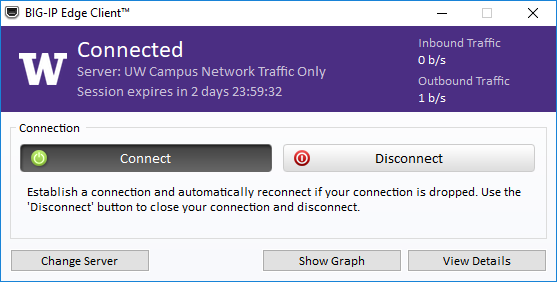

To end the connection, click the tray again, select the VPN tile and click Disconnect.įor administrators, it’s as simple as adding a ‘ChromeOS’ branch off the ClientOS VPE action: Once connected, there won’t be any indication in the tray but if you click it, you’ll see the connection status in the same VPN area as above and it’ll show ‘connected’ within the F5 Access app:Īs you can see in the above image, you can also check Statistics and Diagnostics if those are of interest. Depending on the configuration, you’ll either get the native login window or the WebTop version: To connect, click the bottom tray bar and select the tile that says, ‘VPN Disconnected.’Īnd select the server configured when setting up the app. You can also have multiple server configurations if needed: Once configured, it’ll appear in the list. You can also select a client certificate if required. Your password will not be cached unless that’s allowed by the APM Access Policy. Next, give it a unique name, enter the BIG-IP APM server URL and optionally add your username and password. Next, when launched, you’ll need to accept the license agreement and then add a server from the Configuration tab: Add app when the dialogue box pops and F5 Access will appear in your ‘All Apps’ window. Log on to a Chromebook, open Chrome Web Store, search for ‘ F5 Access’ and press the +ADD TO CHROME button.


With network access, Chromebook users can run applications such as RDP, SSH, Citrix, VMware View, and other enterprise applications on their Chrome OS devices.įrom an employee’s perspective, it is very easy to get the SSLVPN configured. But if 5 th grade is a tiny dot in your rear-view and you’re looking to deploy Chromebooks in the enterprise, BIG-IP v12 can secure and encrypt ChromeOS device access to enterprise networks and applications. She loves it and it allows her access to school applications and educational tools where she can complete her assignments and check her grades. My 5 th grader has a Chromebook for school.


 0 kommentar(er)
0 kommentar(er)
